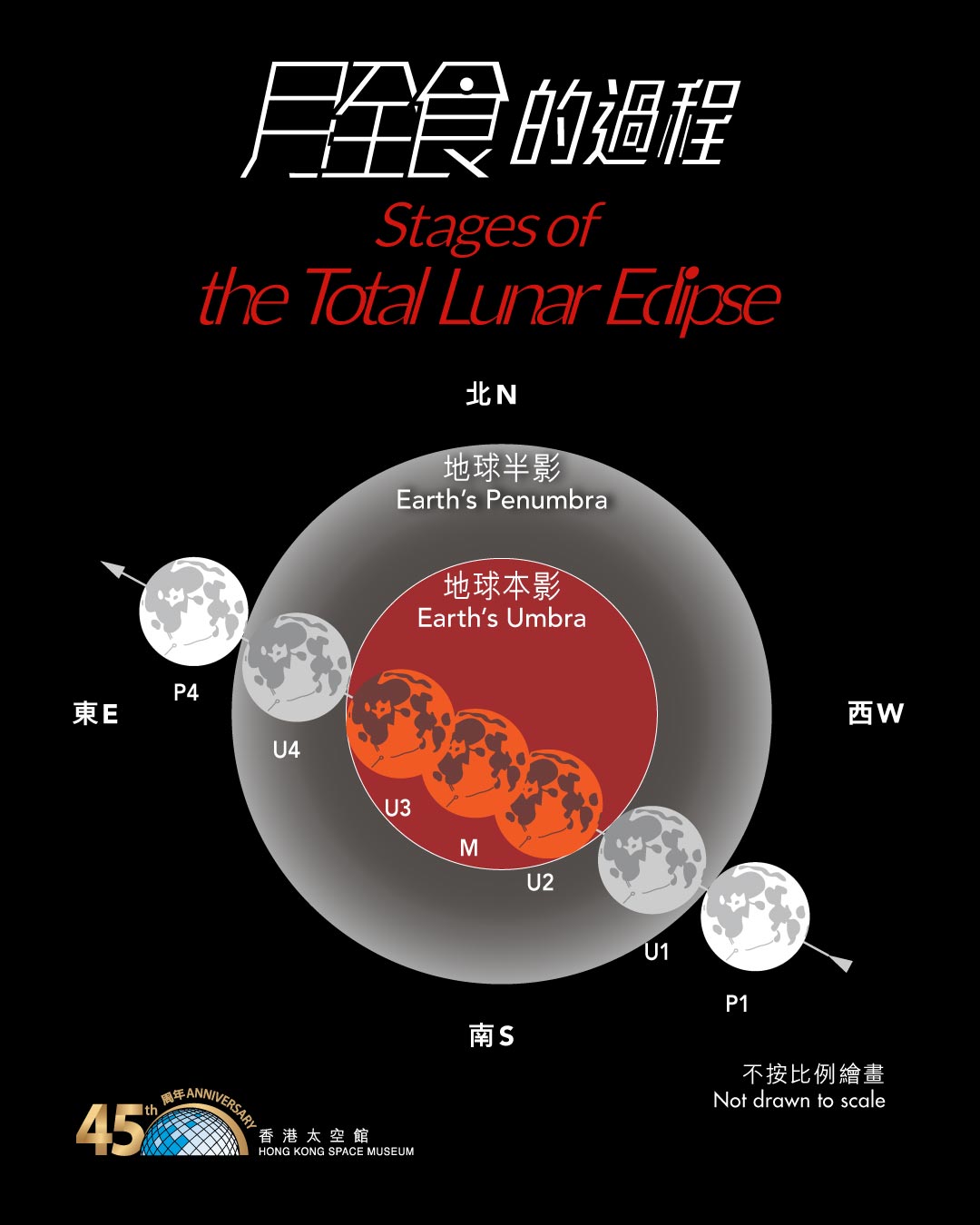A total lunar eclipse, during which the Moon will take on a dull-red hue, will be visible from Hong Kong on the night of 7 September 2025, lasting until early morning on 8 September 2025.
The Moon rises at 6:21 pm on 7 September 2025. The total phase of the lunar eclipse begins at 1:30 am on 8 September 2025, when the Moon enters Earth's umbra completely, and will last approximately 1 hour and 23 minutes. The subsequent partial phase will end at 3:57 am. The next total lunar eclipse visible from Hong Kong will occur on 3 March 2026.

|
Stage |
Hong Kong Date and Time |
Moon’s Altitude (degree) |
Moon’s Azimuth (degree) |
|
Moon enters penumbra (P1) |
7 September, 23:26 |
58.0 |
156.0 |
|
Moon enters umbra (U1) |
8 September, 00:27 |
60.6 |
184.4 |
|
Total eclipse begins (U2) |
8 September, 01:30 |
56.2 |
213.1 |
|
Maximum eclipse (M) |
8 September, 02:12 |
50.3 |
226.8 |
|
Total eclipse ends (U3) |
8 September, 02:53 |
43.0 |
237.1 |
|
Moon exits umbra (U4) |
8 September, 03:57 |
30.4 |
248.3 |
|
Moon exits penumbra (P4) |
8 September, 04:57 |
17.7 |
256.0 |
In addition to observing a lunar eclipse with the naked eye, we can use cameras to capture the spectacular moment. Following the instructions below, you can take stunning pictures with just your phone!
Step 1: Preparation before the lunar eclipse
- Tripod for smartphone: To stabilise your phone and prevent blurry images caused by hand shake.
- Telephoto lens attachment: Attaching it to your phone's camera significantly increases magnification, enabling clear shots of the Moon. (Prices typically range from a few hundred to a thousand dollars.)
- Photography apps: Numerous applications are available on mobile app stores, which allow manual adjustments to settings such as shutter speed and exposure time.
- Remote shutter: To avoid shaking the phone when pressing the shutter button.
- Telescope: If you own an astronomical telescope, you can position your phone's lens over the eyepiece for direct shots of the Moon.
Step 2: Tips for taking photos of the lunar eclipse
- Monitor the weather forecast: Pay close attention to the weather conditions on the day of the lunar eclipse. Cloudy skies may obstruct the observation. Avoid going outdoors in case of poor weather conditions.
- Use the RAW photo format: Certain smartphone models offer the option to capture unprocessed, uncompressed RAW photos, (e.g., ProRAW format on iPhones), which are ideal for post-processing.
- Avoid using digital zoom: The digital zoom function in the smartphones crops and enlarges the images, lowering their quality. Using a telephoto lens is recommended instead.


